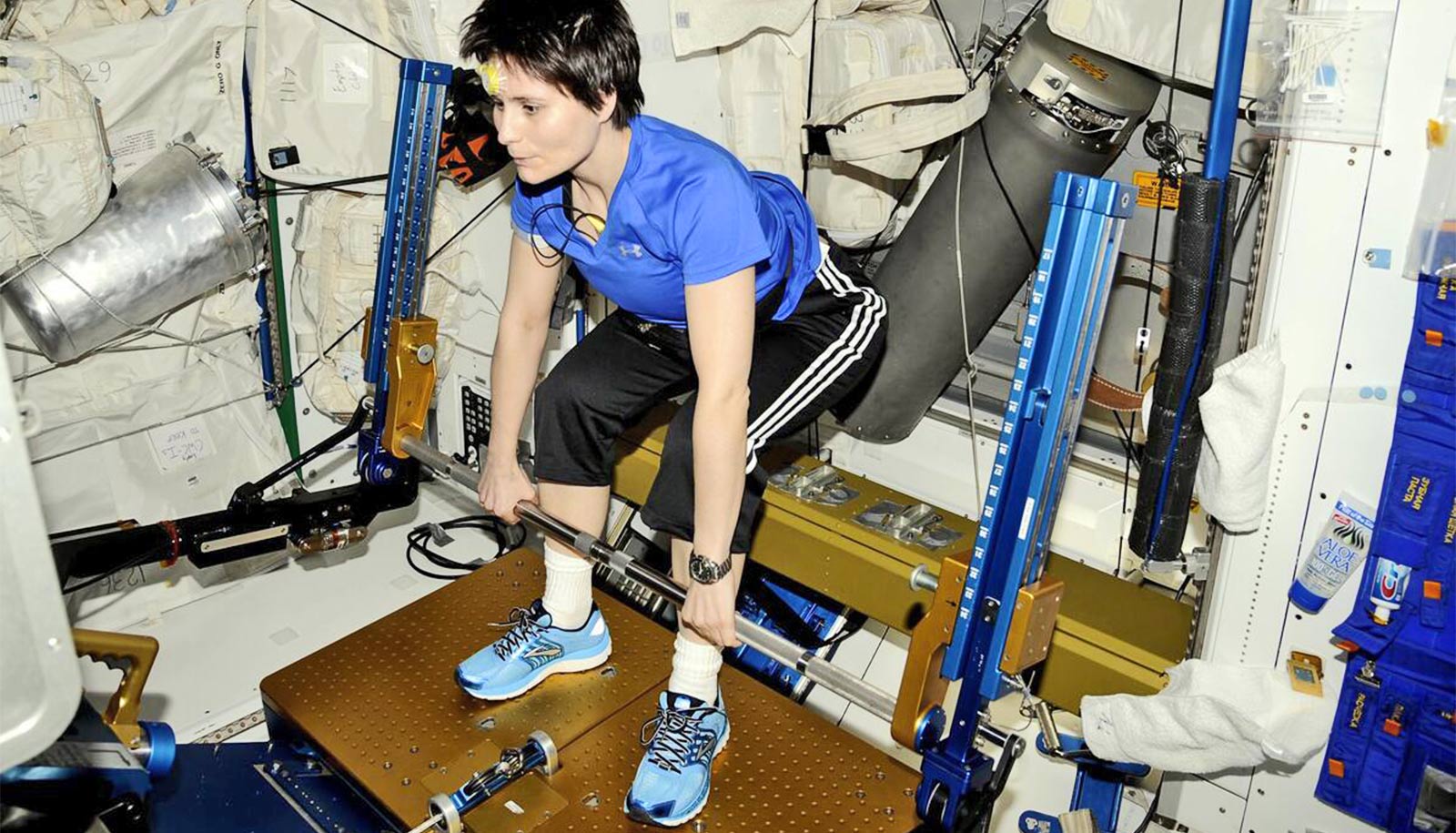Astronomers have observed a pair of giant, hyper-luminous galaxies merging into one, helping them understand more about the history of the universe.
“…this discovery is helping astronomers to understand the timeline of the cosmos.”
“Discovering a hyper-luminous starburst galaxy is an extraordinary feat, but discovering two—this close to each other—is amazing,” says Dominik Riechers, assistant professor of astronomy at Cornell University and lead author of new research published in the Astrophysical Journal.
“It’s nearly 13 billion light-years away and in its frenzied star-forming action, we may be seeing the most extreme galaxy merger known.”
Found in the Southern Hemisphere’s Dorado constellation—known as the swordfish—the ADFS-27 galactic pair is located about 12.7 billion light years away. Astronomers are seeing these galaxies in their infancy—and the light from the galaxies have taken nearly 13 billion years to reach our eyes.
In the paper, Riechers, doctoral candidate T.K. Daisy Leung, and their colleagues captured coalescing galaxies—likely the most massive systems in the universe—by using the Atacama Large Millimeter/submillimeter Array (ALMA), a high-elevation radio telescope in Chile, to detect their merger into a single galaxy.
The merger of the two galaxies has triggered violent, ongoing star formation and lead to the growth of a very massive galaxy in later cosmic epochs, Riechers says.
Leung explains that this pair must have formed efficiently in early cosmic time, forming the foundation of massive galaxies and clusters astronomers see today.
“These massive systems in the early universe are showing us snapshots of their early evolution,” she says.
“Finding these galaxies—about 30,000 light-years apart—helps astronomers to understand how very extreme structures form, as they continue to birth stars and become even more massive,” says Riechers. “These galactic progenitors help us to understand massive galaxies of the present day, as we’ve tried to understand how these actually form. In other words, this discovery is helping astronomers to understand the timeline of the cosmos.”
Riechers explains that his group first detected these systems with the European Space Agency’s Herschel Space Observatory. It appeared as a red dot.
“Galaxies usually look bluer or greener. This one popped out because of its color. It was literally really red, which means it’s a brighter object at longer wavelengths and it is farther away than most galaxies,” Riechers says.
‘Fuel tanks’ extend starburst phase of young galaxies
Earlier this year, this group of astronomers using the ALMA radio telescope examined the red dot and saw two galaxies that have about 50 times the amount of star-forming gas as the Milky Way.
Riechers says an enormous amount of observed gas will be converted into new stars quickly as the two merging galaxies produce stars at a “breakneck pace,” about 1,000 times faster than in the current Milky Way.
Leung says that the ALMA telescope has revolutionized our understanding of young galaxies with its unprecedented resolution.
“We can now see distant galaxies in exquisite detail, as we were able to uncover the compact, starburst nature of this merger pair—known only as a dusty blob in the good old days.”
Telescopes spot galaxy bursting with new stars
The Atacama Large Millimeter/submillimeter Array is an international astronomy facility in partnership between the European Southern Observatory, the National Science Foundation, and the National Institutes of Natural Sciences of Japan, in cooperation with the Republic of Chile.
Source: Cornell University



